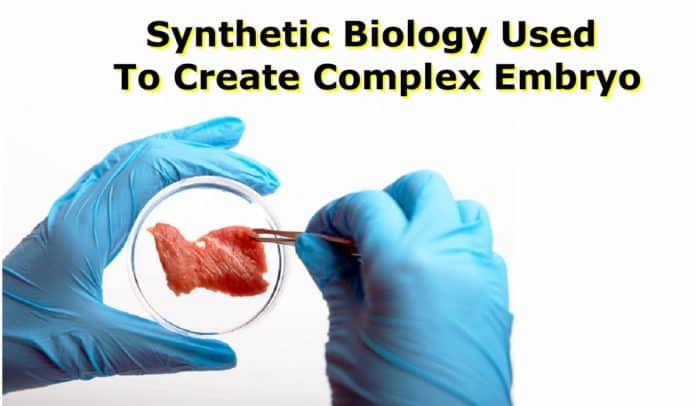Breakthrough In Synthetic Biology – Creating A Complex Embryo
“What I can not create, I do not understand” is what world-famous physicist Richard P. Feynman once said. British mathematician Alan Turing’s observation of nature’s patterns is an example of fundamental biological processes being observed by mathematicians and physicists to generate them with minimum ingredients identified. An elegant and simple mathematical model created by him in 1952 explained the potential to generate a complex embryo from completely homogenized tissue. Although Turing’s ideas that a tissue or cell’s symmetry can be disrupted in some instances couldn’t be proved then, modern genetic engineering approaches have made that dream possible by a breakthrough in synthetic biology.
Scientists at a joint center of CSIC (Spanish National Research Council) and UPF (Pompeu Fabra University) called IBE (Institute of Evolutionary Biology) have used synthetic biology to generate a novel model that uses minimum possible ingredients to demonstrate breaking of symmetry that takes place in embryos. To generate more complex animals’ spatial patterns such as those in humans and Drosophila melanogaster, the researchers have utilized synthetic biological techniques with E.coli as the vector for other species’ genes. This breakthrough in synthetic biology for complex embryo creation proved the possibility of Turing’s predictions about the symmetrical circular patterns exhibited growth of modified E.coli, resembling flower petals.
Currently, IBE Evolution of Technology laboratory’s postdoctoral researcher Salva Duran-Nebreda, who carried out this study in the Complex Systems laboratory as a doctoral student, said that the team wanted to witness symmetry breaking in the microorganism. This study, which is generally seen in animals’ patterns further helped them identify the vital ingredients to reproduce such a phenomenon.
The emergence of spatial patterns in E.coli is regulated by certain factors that the team identified. Duran-Nebreda spoke about 3 ingredients that were modulated. These include cell division, adhesion between cells, and quorum sensing (long-distance cell communication). Insect colony designs and other complicated animal model principles can use this breakthrough in synthetic biology for further research. Complex Systems Group’s ICREA researcher Ricard Solé stated that the synthetic system behaves in the same way miniature organs or organoids help in therapy development, by using a simple in-vitro system to help comprehend embryonic development. This enables complex embryo creation can be used to design and understand various basic biological processes such as organism development from a single zygote. Duran-Nebreda said that developmental disorders could also be understood by amassing more information that involves mechanical and biological processes.
Breakthrough In Synthetic Biology



